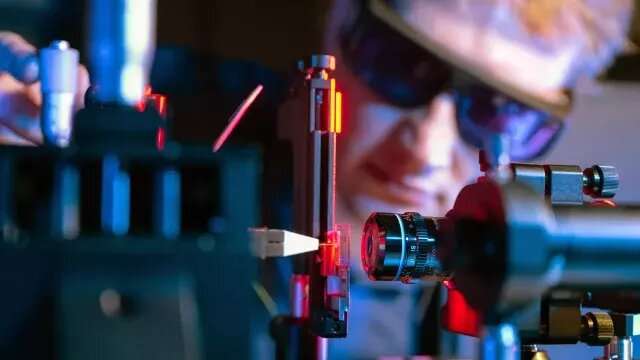A new approach to encryption: physical laws in the fight against hacking
With the development of quantum computers and their ever-improving performance, it will be possible to break existing encryption methods in the foreseeable future. Researchers from the Technical University of Munich (TUM) have taken part in an international research consortium to develop new encryption methods using physical laws to prevent communications from being intercepted. As part of the QUICK³ project, which involves the deployment of satellites, researchers are studying the possibilities of securing communications over long distances.
One of the main areas of work for engineers is to guarantee the security of data transmission over the Internet. Currently, data is encrypted using mathematical methods based on the difficulty of factoring large numbers. However, with the development of quantum computers, such algorithms can easily be hacked.
Quantum communications systems engineering professor Tobias Vogl is working on developing encryption processes based on physical principles. He argues that security will be based on encoding information into individual particles and transmitting them. Physical laws will not allow this information to be extracted or copied. When information is intercepted, the particles change their characteristics. Thanks to these changes, any unauthorized access attempt will be immediately detected.
However, there is a problem of transmitting data over long distances in quantum cryptography. In classical communication systems, information is transmitted using optical fiber, where it is encoded in many light particles. However, the information contained in one particle cannot be copied. As a result, it is impossible to repeatedly amplify the light signal, as is done using conventional optical fiber. This limits the information transmission range to several hundred kilometers.
To overcome this problem, researchers plan to use satellites to transmit data over long distances. At an altitude of more than 10 kilometers, the atmosphere is so thin that light is neither scattered nor absorbed. This will make it possible to use satellites to transmit quantum information over long distances.
As part of the mission QUICK³ Tobias Vogl and his team are developing a system that includes all the components needed to create a quantum communications satellite. At the first stage, the team has already tested each of the satellite components; the next step will be testing the entire system in space.
Researchers will study whether the technology can withstand the conditions of outer space and how the individual components of the system interact. The satellite launch is scheduled for 2025, but creating a full-fledged quantum communications network will require several hundred or even thousands of satellites.
But the concept does not necessarily require transferring all the information using this method, which is complex and expensive. It is possible to use hybrid networks where data can be encrypted using both physical and mathematical methods. Coding and cryptography professor Antonia Wachter-Tse is working on developing algorithms that even quantum computers cannot crack. In the future, this will make it possible to encrypt most information using mathematical algorithms, including documents that require special protection, such as bank documents.

